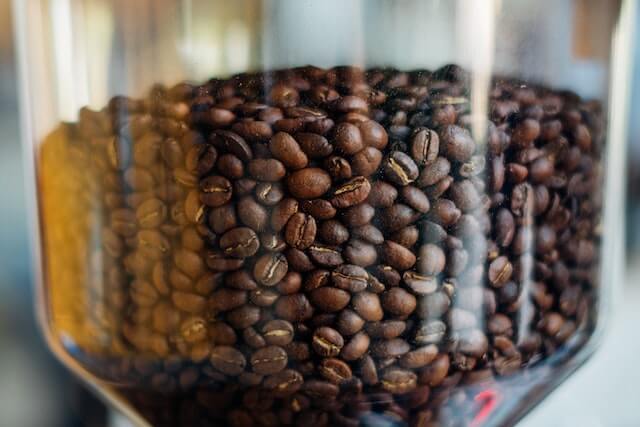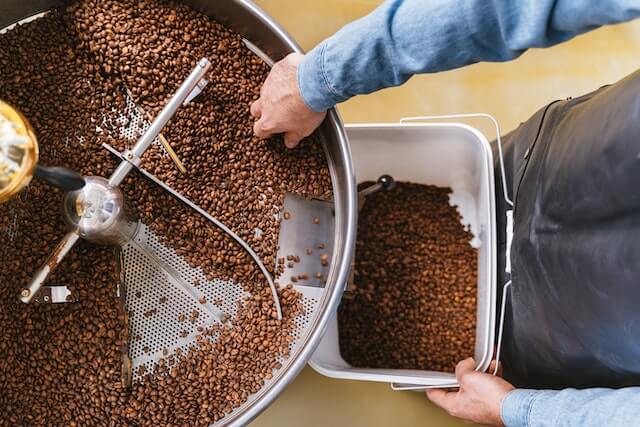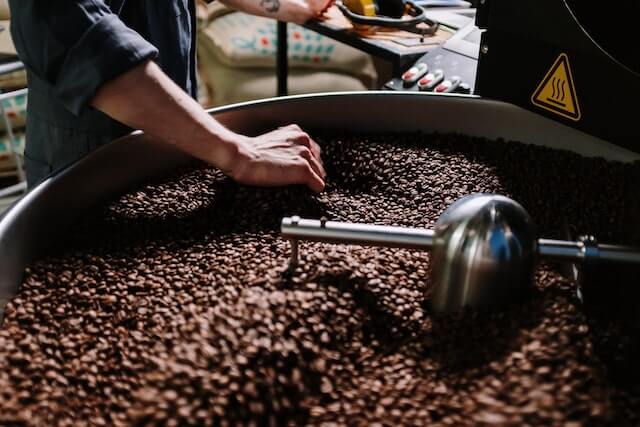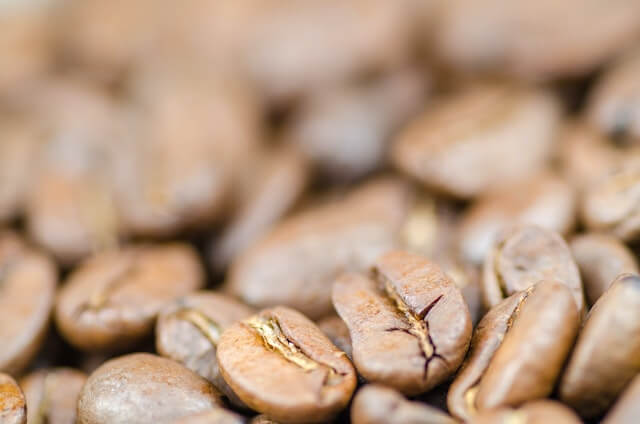In this blog post, we’re diving deep into the world of espresso beans, the ultimate choice for your daily caffeine fix. We’ll explore why these small but mighty beans are a game-changer in the coffee industry and how they can revolutionize your at-home coffee experience.
Espresso beans, with their distinctive characteristics, are the crème de la crème of coffee beans. They possess a unique flavor profile that’s robust and bold, yet smooth and balanced. But there’s more to these beans than just their taste. From their influence on global coffee culture to their impact on our coffee habits, espresso beans have a story to tell.
What is the difference between espresso beans and coffee beans?

Coffee, a universal language of love and warmth, comes in various forms, each with its unique characteristics. Two major players in this vast array – espresso beans and coffee beans – often lead to confusion. Are they different? If so, how? Let’s dive into the world of these beans and unravel their mysteries.
Brewing Method
The brewing method significantly contributes to the difference between espresso and coffee beans.
Coffee Brew
Coffee can be brewed using various methods, including drip, French press, pour-over, and cold brew coffee. Each technique extracts flavor differently, producing varying strength, body, and taste characteristics.
Espresso Brew
Espresso, however, demands a specific brewing process. The finely coffee grounds dark-roasted beans are packed into a ‘portafilter’ and hot water is forced through it at high pressure, leading to a concentrated, bold brew. It’s like a high-intensity workout for the beans, where every ounce of flavor is squeezed out.
Coffee Beans
Coffee beans, depending on the roast level, can range from bright and fruity (light roast) to balanced and smooth (medium roast) to smoky and robust (dark roast). The origin of the beans also plays a significant role in defining their flavor.
Espresso Beans
Espresso beans, being dark-roasted, are known for their bold, rich, and full-bodied flavor. They often have a caramel-like sweetness, with a thick ‘crema’ on top when brewed correctly. The result is a complex, layered experience akin to a symphony, where each note plays its part to create an unforgettable melody.
Understanding the difference between coffee beans and espresso beans can enrich your coffee experience, allowing you to choose the right bean for your preferred brew. Whether you’re a fan of the bold, intense espresso or the varied flavors of coffee, knowing what goes into your cup can make every sip even more enjoyable.
| Criteria | Espresso Beans | Coffee Beans |
|---|---|---|
| Roasting Process | Often darker roast | Varies (light, medium, dark) |
| Brewing Method | Espresso machine; High pressure; Short brewing time | Varies (Drip, French Press, AeroPress, etc.); Low or no pressure; Longer brewing time |
| Flavor Profile | Intense, concentrated, often with notes of chocolate or caramel | Varies widely (fruity, floral, nutty, etc.); generally lighter and less concentrated |
Why should I use espresso beans for making espresso coffee?

As a coffee enthusiast, you’ve probably found yourself standing in the coffee aisle of your local grocery store, staring at the array of coffee and espresso beans, wondering if there’s truly a difference. It’s a common question, and today we’re going to dive into the reasons why espresso beans are the superior choice for making that hearty espresso shot. Spoiler alert: It’s all about the Crema, Caffeine Content, and Stronger Flavor.
Crema: The Golden Crown of Espresso
The crema is the beautiful, creamy layer that sits atop a perfect sip of espresso. It’s formed when air bubbles combine with fine-ground coffee’s soluble oils. The dark roast of espresso beans, coupled with the high-pressure brewing process, extracts more of these oils, creating a richer and thicker crema.
The crema not only adds to the visual appeal but also enhances the overall taste of the espresso. It contains sugars and proteins that give the espresso a sweet, caramel-like flavor and velvety texture. Choosing espresso beans for your brew ensures a consistent and delightful crema that other coffee beans might not deliver.
Caffeine Content: A Robust Wake-up Call
Contrary to popular belief, espresso beans do not naturally contain more caffeine than other coffee beans. The difference lies in the brewing process. Espresso brewing uses a smaller amount of water and a finer grind, which results in a higher concentration of flavors, including caffeine.
Espresso beans are typically dark-roasted, which reduces the caffeine content slightly compared to lighter roasts. However, because they are brewed under high pressure, the resulting sip of espresso contains a concentrated dose of caffeine that gives you that robust wake-up call we love.
Stronger Flavor: A Symphony in a Cup
When it comes to flavor, espresso beans reign supreme. They are generally roasted longer than coffee beans, leading to a more intense flavor profile. This longer roasting process allows the natural oils of the beans to rise to the surface, adding to the rich taste and aroma of the brew.
The result? A full-bodied, bold flavor that stands up to milk and sugar, making espresso beans ideal for drinks like cappuccinos, lattes, and macchiatos. Every sip of an espresso made from espresso beans is like a symphony in a cup, with complex notes of sweetness, bitterness, and acidity playing off each other in harmony.
As an avid espresso drinker myself, I can attest to the significant difference using espresso beans makes. From the rich crema that graces every shot to the robust caffeine content that jolts my senses awake, and the complex flavor that dances on my palate – nothing compares to the experience of a good cup of espresso made from espresso beans.
Can I use regular coffee beans for making an espresso?

The short answer is yes, but the process and result will differ from using espresso beans. Making an espresso is as much an art as it is a science, and understanding this process can help you brew the perfect cup every time.
Differences in Roast
Espresso beans and regular beans start the same, but their journey diverges during the roasting process.
Espresso beans are typically dark-roasted, resulting in a bold, robust flavor profile. The longer roast time allows the beans’ oils to rise to the surface, adding a rich taste and aroma that stands up well to the high-pressure brewing process of espresso.
On the other hand, regular beans can range from light to medium to dark roast, each offering a different flavor profile. Lighter roasts preserve more of the original bean flavors, while darker roasts develop a smokier, fuller-bodied taste.
Regular beans can be used for espresso also, the difference in roast may affect the taste and strength of your brew.
Grind Size and Brewing Time
The grind size is another factor that differentiates espresso from regular coffee. Espresso requires a fine grind, which exposes more surface area of the coffee bean, allowing for a quick and intense extraction.
Regular coffee, depending on the brewing method, often uses a medium to coarse grind. If you’re using regular beans for espresso, you’ll need to grind them finer than usual.
The brewing time for espresso is also shorter than that of a regular cup of coffee. Espresso is brewed under high pressure for about 20-30 seconds, leading to a concentrated, full-flavored shot. Regular coffee takes longer to brew, typically around 4-5 minutes with a cup of drip coffee.
Brewing Espresso at Home with Regular Coffee Beans
If you’re eager to brew espresso at home using regular beans, there are various techniques and equipment you can use. An espresso machine is the most straightforward method, but other options like AeroPress, Moka Pot, or French Press can also be used to create a rich, strong brew similar to espresso.
Regardless of the method, remember to grind your beans finely and brew under high pressure for a short time to capture the essence of espresso.
Tips for Maximizing Home-Brewed Espresso Quality
When selecting coffee beans for brewing espresso at home, consider the flavor profile you prefer. If you enjoy a bold, intense flavor, opt for a darker roast. If you prefer a lighter, more nuanced flavor, a medium roast may be your best bet.
Also, invest in a good quality coffee grinder. A consistent, fine grind is key to achieving that perfect shot of espresso.
What type of coffee beans will give the best drip coffee?

When it comes to making coffee with a drip coffee maker, the options are virtually endless. However, the primary types of beans used are Arabica beans and Robusta beans, each offering a unique taste profile influenced by the level of roast.
Light Roast
Lightly roasted beans are an excellent choice for those who appreciate a milder, more nuanced cup of coffee. These beans are roasted until they reach what’s known as the “first crack” – the point at which the beans expand and crack due to heat.
The result is a bean with a light brown color and no oil on the surface. Light roast coffee typically retains more of the original coffee bean flavor, resulting in a brighter acidity and pronounced fruit, floral, and herbal notes.
If you’re using lightly roasted beans for your drip coffee, remember to use a slightly lower water temperature (around 195-205 degrees Fahrenheit) to prevent over-extraction and bitterness.
Medium Roast
Medium roast coffee is arguably the most popular choice for drip coffee. These beans are roasted past the first crack but stopped before reaching the second crack. This gives them a medium brown color and a balanced flavor profile.
Medium-roasted beans offer a balance between the natural flavors of the bean and the flavors developed during roasting. They have a smooth, well-rounded flavor profile with medium acidity and body. You can expect notes of chocolate, nuts, and caramel.
When brewing medium roast coffee, aim for a water temperature of around 200-205 degrees Fahrenheit for optimal extraction.
Flavor Notes
The flavor notes of your coffee will depend largely on the type of beans and their roast level. Light roasts typically exhibit bright acidity and pronounced fruit, floral, and herbal notes. As the roast gets darker, these bright notes give way to deeper flavors such as chocolate, nuts, and caramel.
It’s also important to note that the origin of the beans can influence the flavor notes. For example, African coffees are often fruity and wine-like, while South American coffees tend to be nutty and sweet.
Understanding the impact of roast levels and origins on flavor can help you choose the right beans for your drip coffee. Whether you prefer a light, fruity brew or a robust, chocolatey cup, there’s a coffee bean out there that’s perfect for you.
Why are espresso beans the best choice for your coffee?
Espresso beans are specifically roasted and ground to be used for making espresso, which results in a stronger and more concentrated flavor compared to regular beans.
What is the difference between coffee and espresso?
The difference between coffee and espresso lies in the brewing method. Coffee is made by pouring hot water over ground coffee beans, while espresso is made by forcing hot water through finely-ground espresso beans under high pressure.
Can I use regular beans for making an espresso?
While you can technically use regular beans to make a cup of espresso, the result may not be as satisfying. Regular coffee beans are not roasted or ground specifically for making espresso, so they may not produce the desired flavor and crema.
Do espresso beans have higher caffeine content than regular coffee?
Espresso beans do not necessarily have more caffeine than regular coffee. The caffeine content of a cup of coffee or a shot of espresso depends on various factors such as the type of bean, the brewing method, and the serving size.
Can espresso beans be used to make drip coffee?
Yes, espresso beans can be used to make drip coffee. However, since espresso beans are typically roasted darker than regular coffee beans, the resulting drip coffee may have a more robust flavor.
What is the best way to grind espresso beans?
Espresso beans should be ground to a fine consistency for optimal extraction. It is recommended to use a burr grinder to achieve a consistent grind size and avoid the risk of over-extraction or under-extraction.
Are dark roast coffee beans the same as espresso beans?
Dark roast coffee beans are not necessarily the same as espresso beans, although espresso beans are commonly roasted to a darker level.




